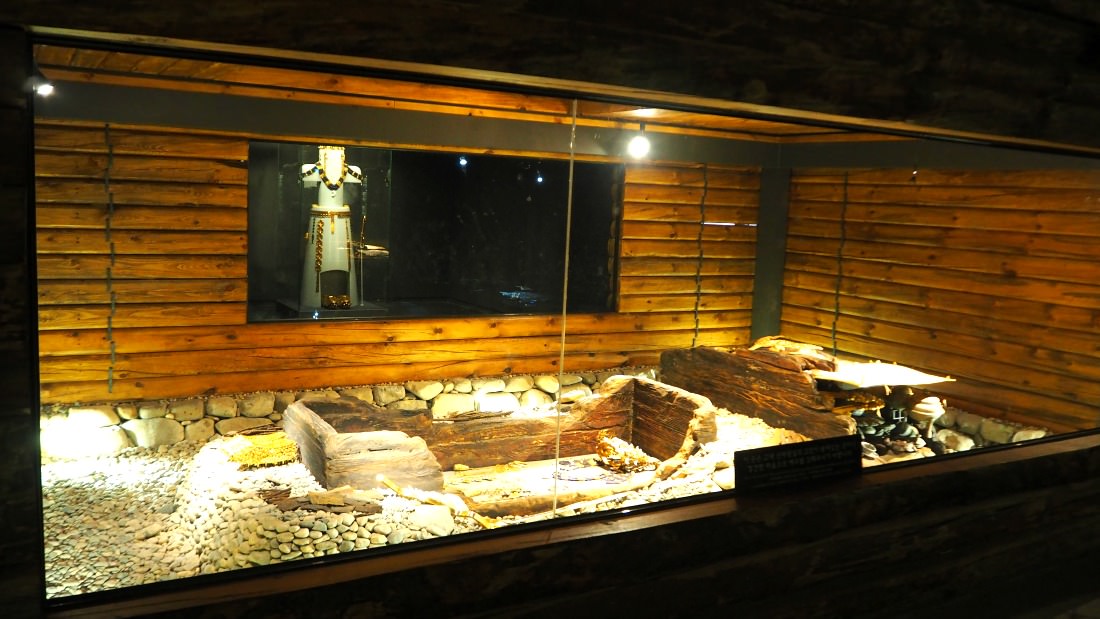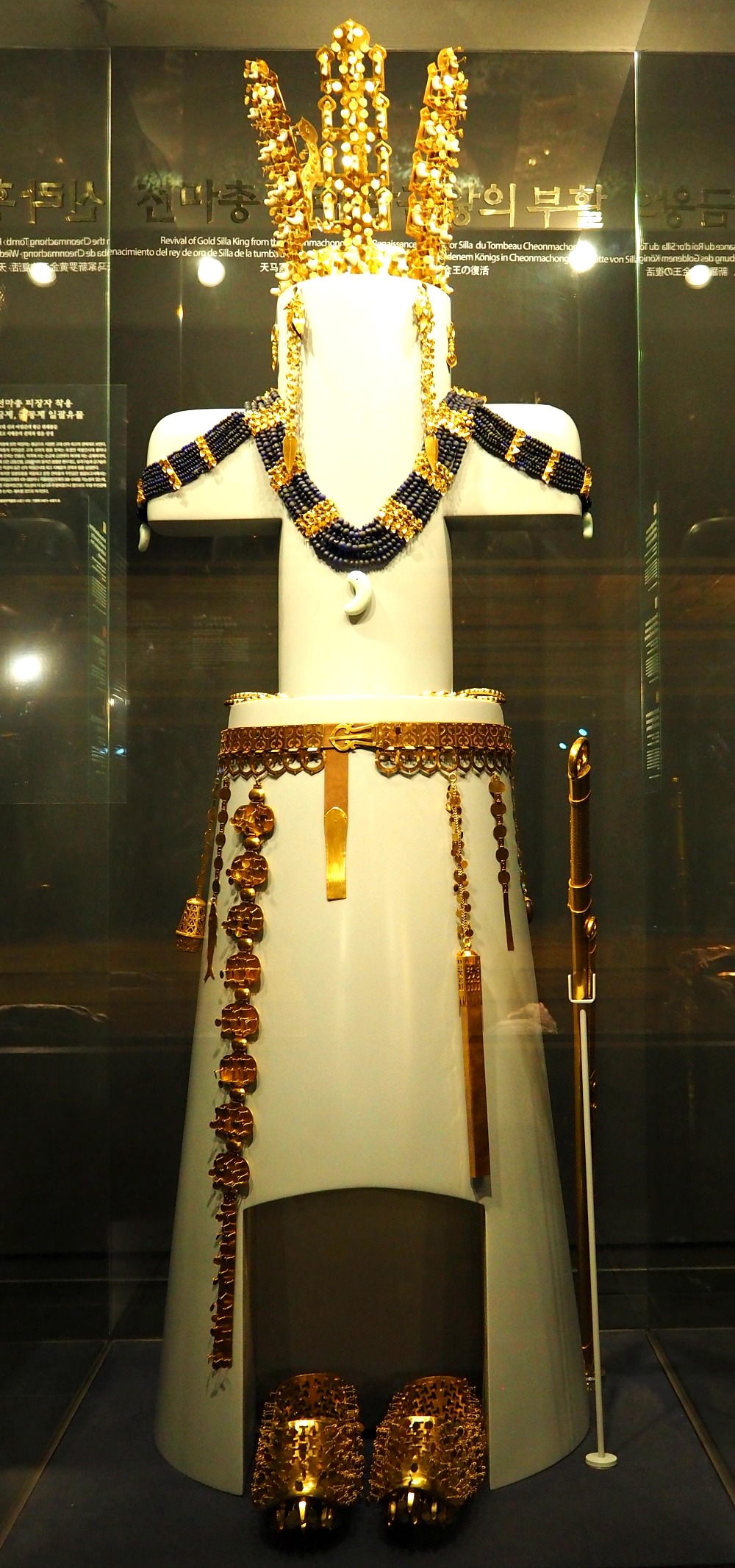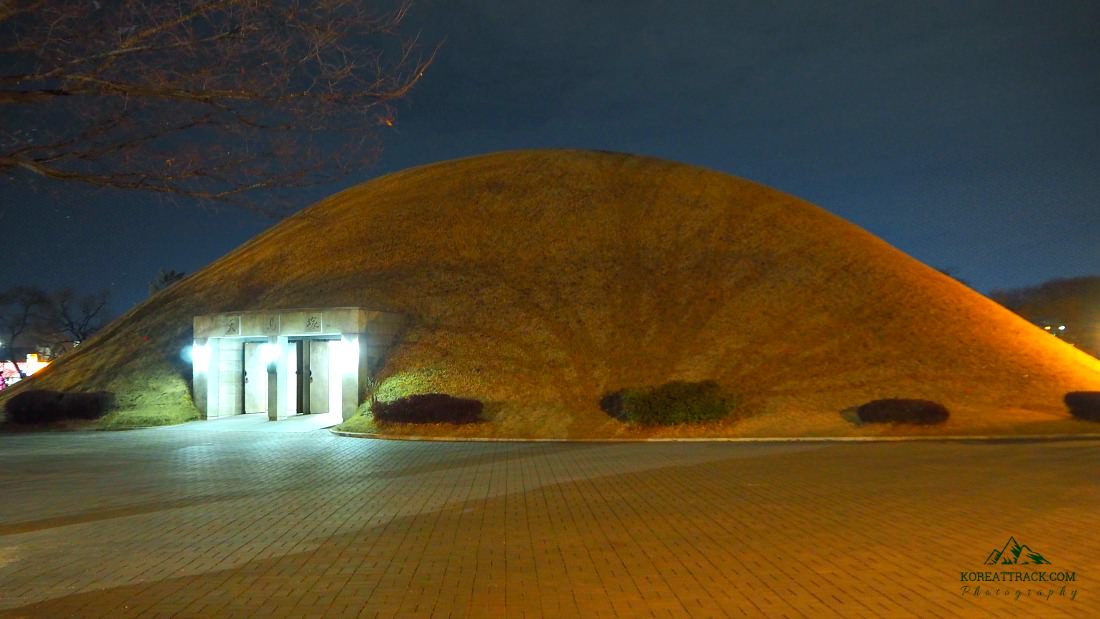Surprising Cheonmachong Tomb: Golden Age of Silla Kingdom
 The White Heavenly Horse painting from which the name of the tomb was coined. It was part of the saddle discovered during the excavation of this ancient tomb in 1973.
The White Heavenly Horse painting from which the name of the tomb was coined. It was part of the saddle discovered during the excavation of this ancient tomb in 1973.Introduction
Tucked away in the historic heart of Cheongju City, South Korea, the Cheonmachong Tomb beckons the curious with its whisperings of the ancient past. An invaluable cultural gem, it invites you to journey back through time, into the once grand Silla Kingdom.
The Cheonmacheong Tomb, also known as "Heavenly Horse Tomb", showcases the rich tapestry of Silla history in its elegant simplicity. Named after a painting of a white horse found within, this ancient burial mound houses the mystery and grandeur of a Silla king.
As one of the rare tombs with its original artifacts still intact, it holds a time capsule of over 11,000 relics, unveiling stories of a glorious bygone era.
From the delicately designed golden crowns to the ornately crafted jewelry and weapons, each artifact is a silent narrator of the Silla's complex history and profound cultural influence. Surrounded by lush greenery, the tomb seems to blend seamlessly with nature, an ancient monument standing in silent tribute to the past.
The Cheonmachong Tomb is more than an archeological site; it is a door to the past, offering a rare glimpse into the lives, beliefs, and artistry of the Silla dynasty. Embark on this historical voyage, and let the echoes of antiquity astound you!
cheonmachong tomb
Cheonmachong Tomb is an ancient royal tomb located among other tombs in Daereungwon Tomb Complex in Gyeongju City, Gyeongsangbuk-do.
It is one of the best attractions in the city due to its proximity and sense of awe and mystery of the findings. The tomb was built in the 5th century during the Silla period and is believed to be the burial site of King Michu, a high-ranking official of the Kingdom.
It has been declared as National Treasure No. 155 by South Korea government since 1973 and has undergone continuous preservation work ever since then. Visitors can explore inside the tomb, which includes the remains of a wooden chamber and many artifacts such as ceramics, jewelry, weapons, and more all unearthed during an excavation in 1973.
Cheonmachong Tomb is not only popular for its historical heritage but also for its scenery. The surrounding area has been developed into a park with vibrant green grassland, trees and lots of blooming flowers.
A lake is located nearby for visitors to relax, listen to the chirping of birds and appreciate nature. As it is situated in a valley, tourists can go up the hill beside the tomb as well to get a beautiful view of the area.
The Cheonmachong Tomb has been an important part of Korean history and culture since its discovery in 1973. It is now a tourist destination that provides visitors with both a chance to learn about the past and to appreciate the nature of the area.
With ongoing preservation efforts, it will remain an important landmark for many years to come.
TRIVIA: Cheonmachong is believed to be built in the 5-6th century of the Silla Kingdom. It was discovered not until in 1973. The findings awe everyone who see them.
 View of the wooden tomb with its royal accessories protected by thick glass windows
View of the wooden tomb with its royal accessories protected by thick glass windowsCheonmachong represents the ancient burial methods of Gyeongju royal people, which is quite particular during the Silla Dynasty.
As nobody (yet) has uncovered who was buried inside this mound tomb, its name is particularly coined from the flying white horse painting on a mudguard saddle flap.
Literally, ‘cheonmachong’ means ‘heavenly horse tomb’ (‘cheon’ for heaven, ‘ma’ for the horse, and ‘chong’ for the tomb).
I visited this historic tomb that evening I arrived in the city. I was surprised to have learned that it is very close to my hotel, which is also located two blocks from the Intercity Bus Terminal and Express Bus Terminal.
So, I paid an entrance fee (2,000 Won) and saw the inner tomb’s amazing findings…
Origins & Excavation findings
Since it was my first time to be inside an ancient tomb (my mind was scrambling with the scenes of the movie ‘Mummy’), I felt a bit eerie but excited!
I passed through that square-shaped entrance and started investigating the items that met my eyes…
- A glass window protecting the wooden coffin. The coffin is heavily adorned with items which are supposed to be worn by the one buried in there.
 A close up view of the wooden coffin and royal accessories
A close up view of the wooden coffin and royal accessories Royal gold ornaments and potteries uncovered alongside the wooden coffin
Royal gold ornaments and potteries uncovered alongside the wooden coffin Replica of the royal gold ornaments and accessories
Replica of the royal gold ornaments and accessoriesThe items include a golden crown, bracelets, antique pots, and dishes, among many other items.
According to the archaeologists, there are over 11 thousand items discovered inside the tomb.
Among such thousands of items is the cheonmado artwork – the white horse painting painted in the sides of the horse’s saddle.
Hope the photos here help you understand better what I am trying to describe.
 Gold head ornaments (left and right items) and a gold cap (middle item)
Gold head ornaments (left and right items) and a gold cap (middle item)basic facilities
- Parking Area Facility
- Washrooms (with a grab bar for handicapped and elderly)
- Free wheelchair rental (wheelchair ramp is accessible)
Aside from the facilities mentioned, you can also continue walking around the area to enjoy exploring the other ancient tombs.
I like most the tombs’ almost perfect cone shapes. The pine trees and other flowering plants (and trees) also look well-maintained. I reckoned that they are most beautiful when the flowers bloom in the Spring season!
 View of the tomb's earthen mound and its lighted entrance
View of the tomb's earthen mound and its lighted entranceA pond with a sitting area is also located close to Cheonmachong Tomb. Prepare your phones or cameras for selfies, groupies, or any photography activity you want to do.
Notices
- No pets allowed
- Entrance Fee: 2,000KRW (Adult) - subject to change
 Daereungwon ancient tomb area include Cheonmachong Tomb
Daereungwon ancient tomb area include Cheonmachong Tombinteresting attractions nearby
- Cheomseongdae Astronomical Observatory
- King Muyeol Royal Tomb
- King Naemul Tomb
- Gyeongju Mediflower Oriental Hospital
- Geumgwancheong Tomb
- Gyeongju Historic Area [UNESCO World Heritage]
- Gyeongjuhanggyo
- Gyocheon Hanok Traditional Village
- Woljeonggyo Bridge
 Cheomseongdae Astronomical Observatory
Cheomseongdae Astronomical Observatorytraveling to cheonmachong
You can take a train or bus to Gyeongju City from Seoul or anywhere in the country. Alternatively, fly to Incheon Airport, Kimpo Airport and nearby airports in Gyeongsangbuk-do Province.
From Seoul Station: Take a train for Singyeongju Station. Then take a bus (Nos. 60, 61, 700) the get off at Geumseong Sageori Bus Stop. Use your smartphone to navigate easily.
Alternately, you can take a train for Gyeongju Train Station. From the station, take Bus No. 40 then get off at Cheonmachong Back Gate Bus Stop.
Take A Bus:
From Dong Seoul Bus Terminal, take an Intercity Bus for Gyeongju Intercity Bus Terminal. From the terminal, just walk away from the river’s direction. It takes around 12 minutes to get there.
Google or any navigation Apps proves very useful (Yes, I did use it ^^).
Also, you can take an intercity bus from Incheon Bus Terminal at Incheon Terminal subway station, Exit 3.
Accommodation in Gyeongju City
There are two main areas that you can get good choices of accommodation: Gyeongju City Center hotels and Bomun Tourist Complex hotels.
In Gyeongju City, where Cheonmachong Tomb is located, has various local hotels and guest houses. They are mostly not the international corporate hotels but they also offer great facilities and services.
It is in Bomun Tourist Complex area where you can stay at big and world famous hotels such as Kensington and Benikea hotels.
I stayed overnight in a nice and discount hotel close to Gyeongju Intercity Bus Station, which is also located nearby the city's attractions including Cheonmachong.
Please, let me know if you have questions regarding anything about that site.
Thanks and have a pleasant journey!
- Home
- Korean UNESCO Heritage Sites
- Cheonmachong Tomb
Get Exciting Activities
Book one of our exciting activities today to experience the thrill of a lifetime! Take advantage of this opportunity and secure your spot in advance.
Hotel Map Guide
Find your affordable, accessible, and comfortable hotel in Seoul at Agoda.Com. See the hotel map below...
Hotel Booking Guide
Find affordable and amazing hotels on Agoda.com using the search box below. Book now to enjoy great discounts and save!










New! Comments
What do you think about this page? Leave me a comment in the box below.